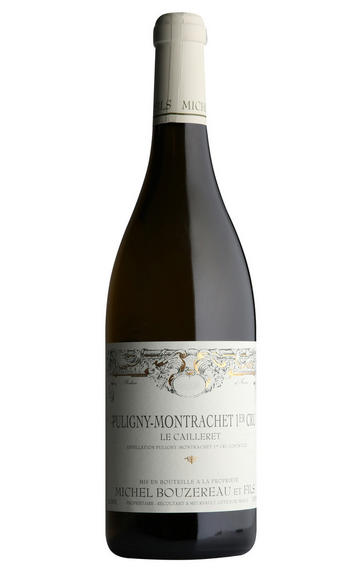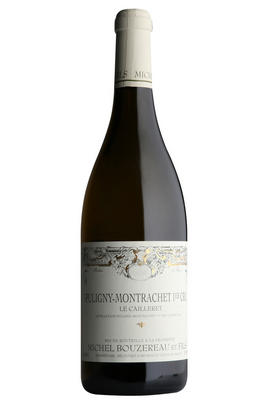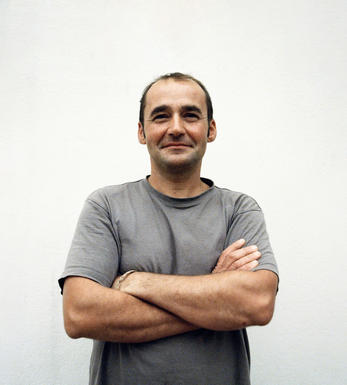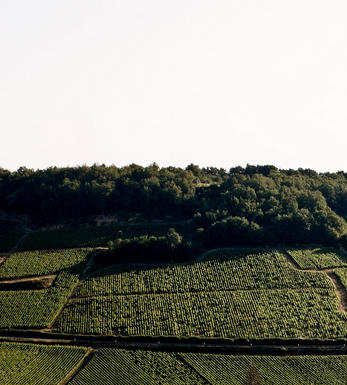
2010 Puligny-Montrachet, Le Cailleret, 1er Cru, Michel Bouzereau & Fils, Burgundy

About this WINE

Domaine Michel Bouzereau
The Bouzereau clan is widespread in the village of Meursault, with Domaine Michel Bouzereau at the forefront. Michel Bouzereau comes from a large winemaking family and has held the post of President of the Burgundy Growers Union. His is a voice to be heard. And what he likes to talk about is the traditional way of making wine. He ferments in cask and gives his wines nine months on their lees. Determined that his wines will smell and taste only of wine, the importance of new wood is acknowledged but downplayed. Michel's son Jean Baptiste is now in charge of making the seventeen wines from this 11 hectare estate.
Jean-Baptiste has respected his father's more traditionalist practices but he has instilled a fresher, livelier element to the wines which only enhances their appeal. These wines offer very good value for money and are benchmark examples for each of the crus. They can also age better than could be expected. The whites of this domaine are those most likely to be singled out, with perhaps the Premier Cru of Les Genevrières being the finest.
Their Bourgogne Blanc comes from vineyards which are within the boundaries of Meursault but just outside the appellation. Such generic Burgundies are excellent choices for good value, especially as this wine is treated with the same care, attention and barrel ageing as its more senior brethren.

Puligny-Montrachet
Puligny was one of two villages (along with Chassagne) which gained permission in 1879 to hyphenate the name of its most famous vineyard, Montrachet, to its own.
The reputation of Puligny-Montrachet is based around its four Grands Crus. Montrachet labels often boast a noble, triumphant 'Le' in front of its name, lest you dare confuse it with any lesser wine. It has much to be proud of, with many considering Montrachet to be the greatest white wine in the world. At its best it has an intensity, complexity and elegance that make you wonder how such a wine could be made from mere grapes.
The luxurious and explosive Chevalier-Montrachet is not quite as deep, although it is probably the next best. Only marginally less impressive, and rather more consistent than Montrachet is the richly textured Bâtard-Montrachet (also shared with Chassagne). Bienvenues-Bâtard-Montrachet is equally good, with the focus on honeyed finesse and exquisite balance rather than richness.
These legendary wines are supported by a host of fabulous Premier Cru vineyards capable of reaching Grand Cru quality. Brimming with flavour and intensity, Le Cailleret and Les Pucelles (which both lie across the road from Le Montrachet) are prime candidates, along with Les Demoiselles, Les Combettes and Folatières.
Sandwiched between the larger Chassagne and Meursault, Puligny produces wines that are more striking than any in the Côte d’Or, portraying a floral elegance alongside a stylish, steely concentration. They are very different to Meursault: more refined and delicate, and less rich.
Village level Puligny-Montrachet from top growers can be very good indeed, but is all too often unexciting and disappointing. Grands Crus normally need at least eight years before they can be broached, and last for 20 or more. Premiers Crus should generally be enjoyed between five and 15 years of age; village wines from three to 10 years.
In theory, you can find red Puligny-Montrachet, but it scarcely exists anymore, and is rarely worth the price tag.

Chardonnay
Chardonnay is often seen as the king of white wine grapes and one of the most widely planted in the world It is suited to a wide variety of soils, though it excels in soils with a high limestone content as found in Champagne, Chablis, and the Côte D`Or.
Burgundy is Chardonnay's spiritual home and the best White Burgundies are dry, rich, honeyed wines with marvellous poise, elegance and balance. They are unquestionably the finest dry white wines in the world. Chardonnay plays a crucial role in the Champagne blend, providing structure and finesse, and is the sole grape in Blanc de Blancs.
It is quantitatively important in California and Australia, is widely planted in Chile and South Africa, and is the second most widely planted grape in New Zealand. In warm climates Chardonnay has a tendency to develop very high sugar levels during the final stages of ripening and this can occur at the expense of acidity. Late picking is a common problem and can result in blowsy and flabby wines that lack structure and definition.
Recently in the New World, we have seen a move towards more elegant, better- balanced and less oak-driven Chardonnays, and this is to be welcomed.


Buying options
Add to wishlist
Description
The exceptionally attractive nose of this wine is lead by touches of baked apples and some lifted floral notes. On the palate the flavours start gently, but then rapidly build in intensity before a fabulous finish.
Jasper Morris MW, Burgundy Director
Jean-Baptiste Bouzereau started picking early on 17th September in 2010, continuing over the following nine days as the vineyards ripened. His wines maintain their traditional status as excellent value for money, while the move to his new cellars two years ago has improved the consistency of the range and purity too. The aromatics of this 2010 vintage remind Jean-Baptiste of 2002, but perhaps with greater flesh.
wine at a glance
Delivery and quality guarantee